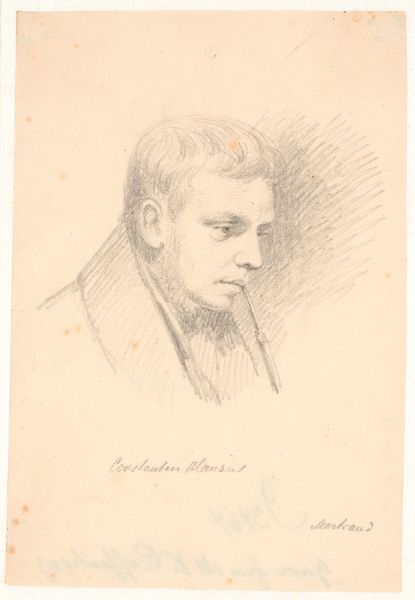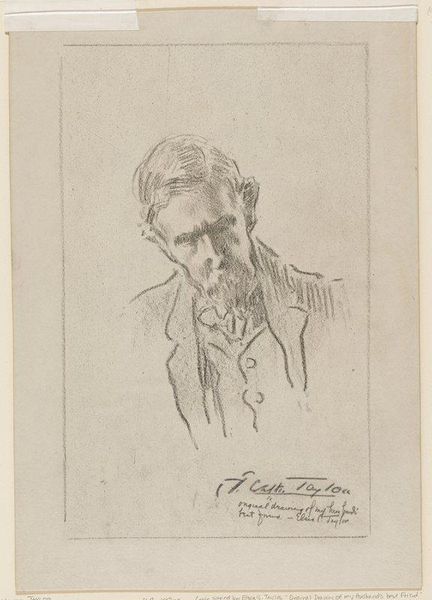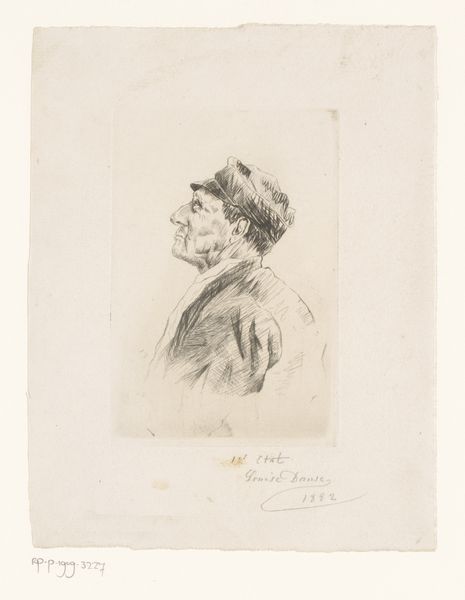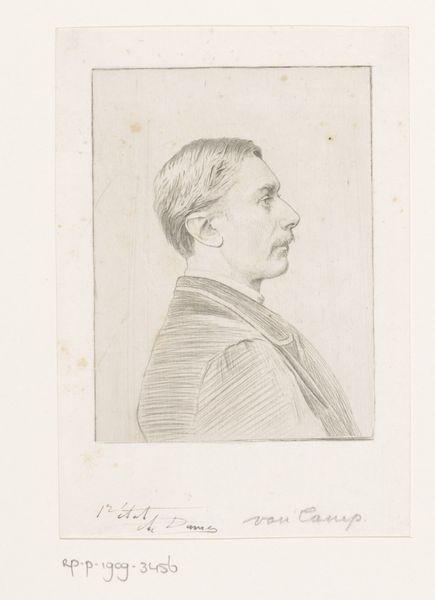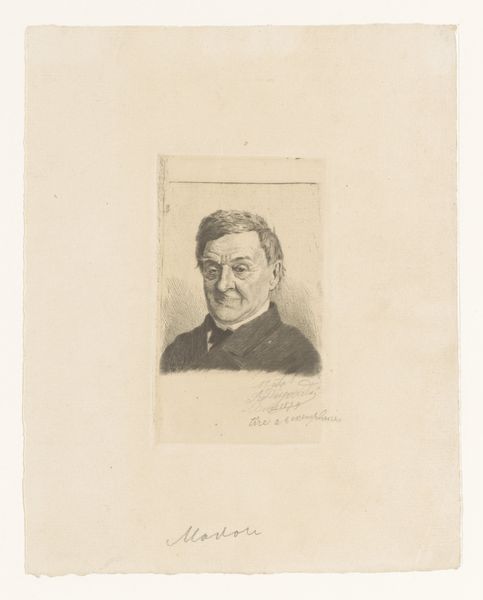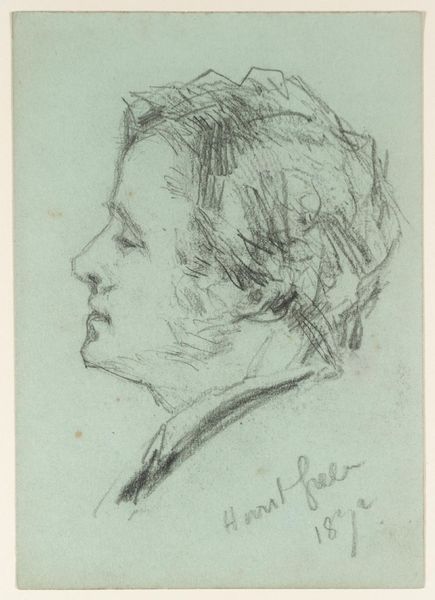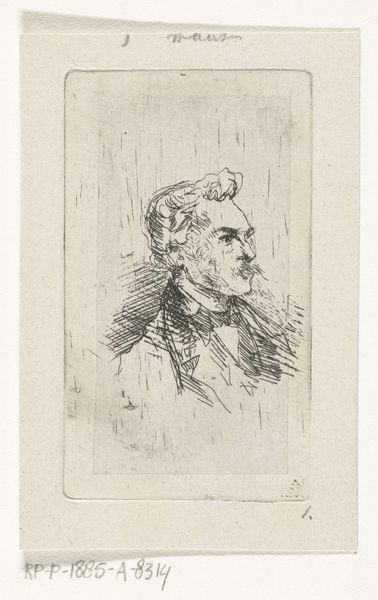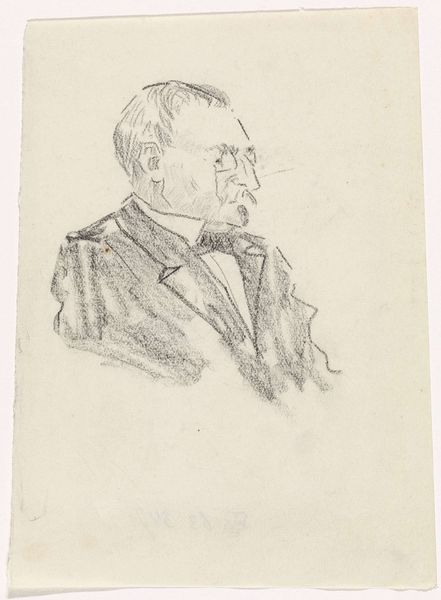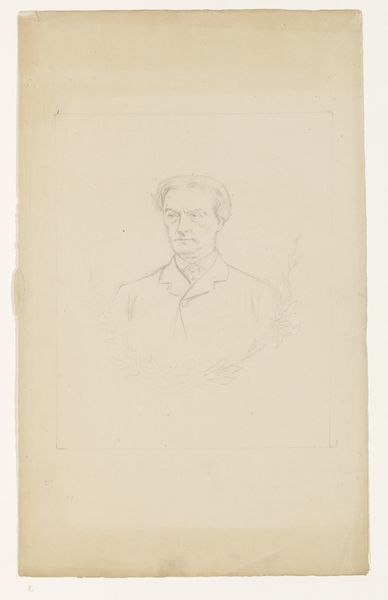
Portret van de schrijver Frederik Willem van Eeden, op latere leeftijd, en profil c. 1880 - 1955
0:00
0:00
drawing, pencil, graphite
#
portrait
#
pencil drawn
#
drawing
#
pencil sketch
#
pencil drawing
#
pencil
#
graphite
#
sketchbook drawing
#
pencil work
Dimensions: height 173 mm, width 127 mm
Copyright: Rijks Museum: Open Domain
Curator: This is a pencil drawing, a portrait of Frederik Willem van Eeden, rendered by Willem Moerkerk sometime between 1880 and 1955. What do you make of it? Editor: A starkly intimate depiction! There’s a melancholy fragility here. The soft pencil lines and averted gaze project a sense of introspection or even weariness. Curator: I agree. Note the expert use of shading to create depth and form. The subtle gradations in tone describe the contours of van Eeden's face, lending a sculptural quality despite the flatness of the medium. Observe how the artist employs hatching and cross-hatching techniques in the suit to build up form. Editor: And I see van Eeden, a physician and writer associated with the literary movement De Nieuwe Gids, captured through the lens of perhaps his age, social position, but there is that palpable vulnerability that resists pure class readings. Given his advocacy for socialism, the sketch also humanizes his image in ways photography may not have. Curator: Certainly, the choice of graphite contributes to the sense of immediacy and directness. The sketch lines are raw and honest, avoiding the more polished effects we might find in ink or paint, providing us with direct insight into the relationship between Moerkerk and his subject. Editor: Perhaps an intended intimacy—but it feels relevant to consider how this quiet expressiveness intersects with other images of Dutch socialists of the period; the degree of softness perhaps allowed or resisted as they represented themselves within rigid societal structures. Curator: You're prompting me to consider how form can both echo and deviate from period portrait conventions. However, I am most struck by how this portrait speaks to the capabilities of something as humble as pencil. Editor: Yes, its power lies in presenting a multifaceted glimpse of a subject defined by so much more than class or political alignment alone. It truly sparks more questions about representation.
Comments
No comments
Be the first to comment and join the conversation on the ultimate creative platform.
